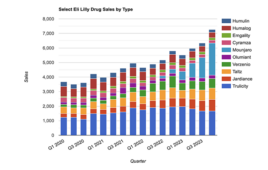Life Technologies Corporation announced a partnership with Cellular Dynamics International (CDI), the world’s largest producer of human cells derived from induced pluripotent stem (iPS) cells, to commercialize a set of three new products optimized to consistently develop and grow human iPS cells for both research and bioproduction.
The partnership marries CDI’s leadership in human iPS cell development with Life Technologies’ expertise in stem cell research tool manufacturing and global distribution network to make these novel technologies accessible to researchers around the world. Life Technologies’ commercialization of Essential 8 Medium, Vitronectin (VTN-N), and Episomal iPSC Reprogramming Vectors addresses several challenges associated with developing relevant cells for use in a wide range of studies, from basic and translational research to drug discovery efforts. The effectiveness of these products is the focus of recent validation studies published in the journals Nature Methods and PLoS One.
To eliminate the variability introduced by a mouse cell feeder layer previously used during the culture of human iPS cells, researchers have adopted “feeder-free” media. However, existing feeder-free culture media contain more than 20 interactive ingredients, many of which, such as bovine serum albumin (BSA) and lipids, are highly uncharacterized and vary significantly from lot-to-lot. This leads to variability in iPS cell growth and differentiation, and impedes the progress of disease studies and potential clinical applications.
Essential 8 Medium, manufactured in a Life Technologies current Good Manufacturing Practices (cGMP) facility, overcomes this barrier. In addition, BSA and other undesirable components have been removed from the media, thus reducing the number of ingredients to just eight well-characterized elements required to support efficient growth, eliminate variability, and enable large-scale production of human iPS cells.
“Essential 8 has far fewer variables, it’s more straight-forward and a lot more reproducible,” said Emile Nuwaysir, Ph.D., Chief Operating Officer and Vice President of Cellular Dynamics International. “If the goal is to make a billion cardiomyocytes a day, every day, you want to make sure they’re all the same. That’s virtually impossible using mouse embryonic fibroblasts and it’s very difficult using the more complex, feeder-free media that were available before Essential 8.”
Optimized for use with Essential 8 Medium, Vitronectin (VTN-N) is a defined, human protein-based substrate that further eliminates variability during iPS cell culture – unlike most existing feeder-free media that requires the use of an undefined matrix derived from mouse tumor cells for cell attachment and growth. The combination of Essential 8 Medium and Vitronectin (VTN-N) provides a defined culture system free of non-human components for robust, cost-effective and scalable iPS cell culture.
Life Technologies is also introducing the Episomal iPSC Reprogramming Vectors, which leverages non-viral, non-integrating technology to deliver six genes to initiate the reprogramming of human somatic cells, such as blood and skin cells, to iPS cells. A non-viral approach offers a key advantage: human-derived iPS cells have more relevance for patient-specific, disease research. Traditional viral-based methods, such as lentivirus or retrovirus, require integration into the host genome for replication and can disrupt the genome of the reprogrammed cells.
“The ability to reproducibly establish and culture iPS cells using defined reagent systems is key for the advancement of stem cell research, disease modeling and drug discovery,” said Chris Armstrong Ph.D, General Manager and Vice President of Primary and Stem Cell Systems at Life Technologies.
All three products were developed at the University of Wisconsin by Dr. James Thomson, whose lab pioneered embryonic stem cell research and much of the technology surrounding stem cell culturing conditions, in vitro differentiation and iPS cell generation.
Date: June 12, 2012
Source: Life Technologies Corporation
Filed Under: Drug Discovery




